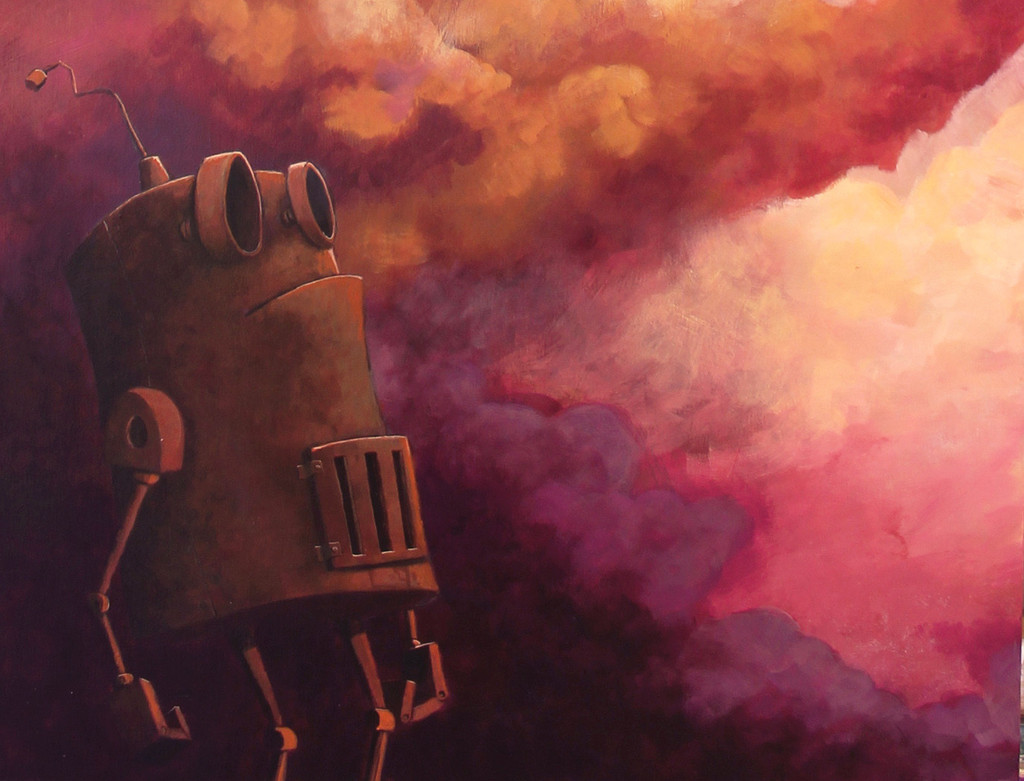Size matters: Accessible art is finally a reality
By Britt Julious

Size matters: Accessible art is finally a reality
By Britt Julious
Scale matters. When considering the city of Chicago, this is reflected in the scale of our buildings to the general sprawling landscape of where we live, from neighborhood to neighborhood and from block to block. Scale also matters to the art world, for it can affect the supposed quality of a work, it’s value (or lack thereof) and it’s overall presentation.
Vertical Gallery‘s latest exhibition (curated by Ben Schuman-Stoler and Patrick Hull) explores not only the effects of size on a work of art, but also the reproduction of a work. Featuring a slew of local and international artists, The Economics of Art 2013 explores the ways in which art is reproduced, bought, and sold online and in galleries by exhibiting originals along with limited edition, open edition, screen printed, and digital prints of the original work. The exhibition features Chicago artists such as Dmitry Samarov, Ian Ferguson, Julie Murphy, along with Anthony Freda, Dave Pressler, David Cooper, and others. The Economics of Art 2013 opens August 3 and runs through the 31st.
Chicago prides itself on its unpretentious presentation. I like to call it the truest American city. Whereas New York is an international city and Los Angeles is a post-war absurd collection of suburbs, Chicago is the truest representation of what America can build as a city and the people (and politics and beliefs) that are born within it.
This lack of pretension finds itself in everything from the food we eat to the clothes we wear. From the visual art world, it also finds itself situating nicely with forms of art and art making that exist outside of the commercial art world.
“There is no Chelsea or Soho here,” Schuman-Stoler said, referring to the largest two New York gallery-heavy neighborhoods. This lack, however, is Chicago’s gain. In its loss we find growing artistic and collecting movements that are often based in personal taste and the love of the art rather than in what value might accrue years later. In the original model, the easiest way to own art would include saving up for months or years to purchase one piece that you wither loved or hoped would gain value to be resold years later. Things are different now. For the emerging consumer, it is a matter of deciding what is your price and personal value point. Are you doing it because you like the image or because you like the price point or because you are a collector?
Festivals and events such as Flatstock and the Renegade Craft Fair (founded in Chicago and going international this year) speak to the smaller-scale, yet still thriving desire for Chicagoans to own art, but to own it on a scale that is accessible. Thus, prints.
“This whole affordable art this is really new and totally related to the internet, with new business models,” said Schuman-Stoler. People want to own images, but many will never be able to afford it or even conceive of affording it. The evolution of prints is the evolution of inaccessibility to access ability, for the few to for the many.
“There’s a relationship with what people have now and this desire to own and consume them in a new way,” Hull began. “Art is conceivable now.”
There are a variety of different prints, everything from silk screen to open editions to giclee. Each type can hold a different value, material or medium. Chicago’s growth is probably equal to the growth of prints in general, but coupled with our festivals and our craft printing community, it feels especially potent here. This is where the grand statements are made about art and craft and scale and reproduction. We just don’t make a big show about it.
In many ways, the creation of the prints calls into question the value of the works. Artists must ask themselves what a reproduction of their work says about the work itself. Does the work accrue less value because it can or has been reproduced? What can and does get lost in the process of reproduction?
“People are going to come to the show with an image that they love,” Schuman-Stoler notes. “But without these things that sacrifice quality.”
Prints are reproductions and they are also of the people. Through reproductions, artists help build relationships to people through more accessible methods of production. Prints in this struggling economy open the art world to the emerging collector, the sort of person who might have felt as if the art world was out of his or her reach. Schuman-Stoler and Hull were still pricing prints by press time, but works would be purchasable for the average patron off the street. This too speaks to the Chicago “way,” one that despite its separating borders, is “real” in a way that most places are not.
Vertical Gallery is located at 1016 N. Western Ave.
